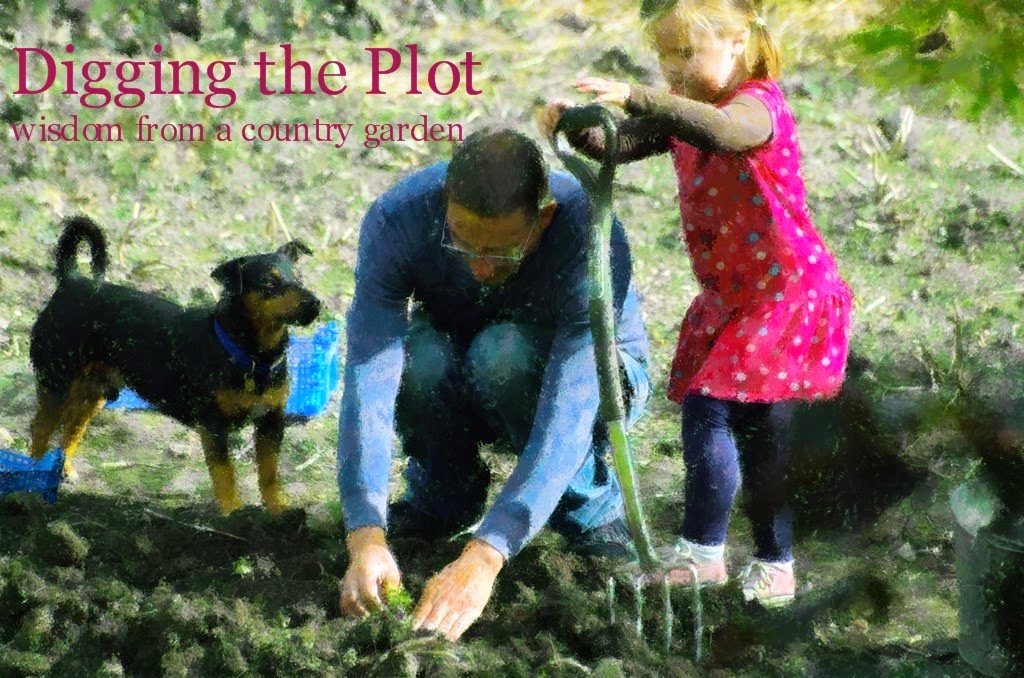HAVING A COUPLE of days with not so much work on, I decided to start digging ready for next year.
Question:
WHEN SHOULD I BEGIN DIGGING?
I always make a start some time between the end of September to mid October and aim to be finished by Christmas. You don't have to do it all in a single day unless you happen to be a masochist! I potter along steadily, doing 3 spits a day until I'm finished.
BUT WHY IN THE AUTUMN?
Because it gives a chance for the seasonal weather to do its work. I want the soil in spring to be friable and crumbly rather than in great big clods. Makes it easier to prepare for planting. If I dig in the autumn, then when the frosts arrive, the frozen moisture will expand inside the clods of soil and break it down for me. I might as well let nature lend a helping hand.
PREPARING TO DIG 1
First I measure out the area I want to dig as a spit with some string or twine. I have beds 3 foot wide
for ease of weeding. If I am thinning carrots this means I can reach easily to do so without putting my foot in the bed. It's also utilising land to maximise the crop. If I am planting Brussels sprouts or cauliflower, it's 2 foot between rows, so therefore in a 3 foot bed I can get two rows of cauliflowers or two rows of Brusselss sprouts. Most of it works out mathematically. It's 6 inches between rows of carrots and if you think of it mathematically you start off 3 inches from the edge of the bed, then go 6 inches, 6 inches 6 inches, 6 inches, 6 inches, you've filled the bed. That's more or less the 3 foot used up. Same as onions, you plant them 6 inches apart to give them room to grow, but also to leave room for the hoe to get between them. More on hoeing another time.
PREPARING TO DIG 2
The next thing I do is take a wheelbarrow and fill it with some well rotted compost. If there is manure in it so much the better. We are fortunate in that we have a farm and stables down the lane, so I have access to free horse manure. In the past I have bought trailer loads of pig and cow manure from farmers. If that has been unavailable then I have used tubs of chicken manure bought from old-fashioned gardening shops and centres where they still stock practical products as well as the frilly stuff!
I have a large compost heap I constructed myself from old slabs and pallets into which goes manure, straw, grass clippings, hedge clippings, potato peelings, egg shells, teabags, and any discards from cookery preparation of vegetables in the kitchen. Obviously no meat or cooked food because of attracting vermin. I also have two large ready-made plastic compost bins which contain the same sort of mixture. Here's my home made compost heap after a year. I found some mice nesting in it which made the dogs very interested indeed. Jack caught and ate a mouse that had been nesting in the heap!
 |
| off comes the front |
 |
| You can see how the layers have rotted down. |
 |
| mouse hunting! |
 |
| forking compost into the barrow |
 |
| Close up of a year's rotted down compost. |
 |
| Digging the trench |
The next thing I do is take a second empty wheelbarrow over to where I'm going to start digging my trench. Now I'm all set.
I use my spade as a blade to mark out the first outline of the first cut in the trench. For me this is about a foot in length and a spade length deep. I put the soil from this first trench into the wheelbarrow and set it one side.
Once I have made the trench, I then fill it 2/3 full with the manure mixture out of wheelbarrow one. The next thing to do is dig another length of the spit i.e. the next foot long section behind the first one. The soil from that fills in the top of trench 1. I continue as before, putting in compost and manure to 2/3 the depth and topping with soil. When I get to the final trench length, that's when the spare wheelbarrow of soil gets used to top off the last bit.
 |
| Preparing to fork in the cmpost/manure |
 |
| Compost in the trench |
 |
| Same again. Plenty of straw in this helping |
It will end up looking like a great long grave mound, but that's right. It can now be left for everything to settle and for the weather to do its work. Raking down and preparing to plant is a job for the spring. The next task now is to mark out another 3 foot width of trench and give it the same treatment. Repeat until area is finished!
 |
| second trench dug and soil from it used to cover up and finish first trench. Jack supervises. |
 |
| RIP until spring. |
NOTE FROM ELIZABETH
I wonder how hard it would be to do all this with a medieval spade. Here's one from the 12th century!








